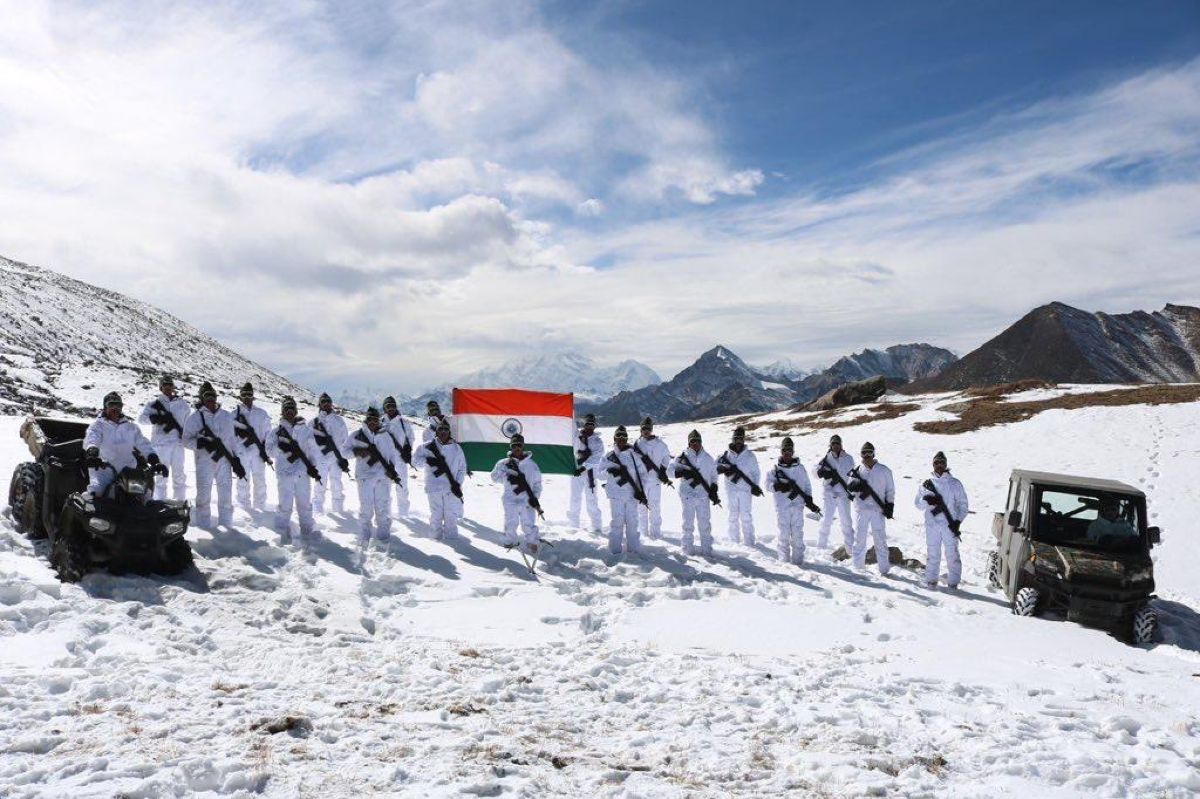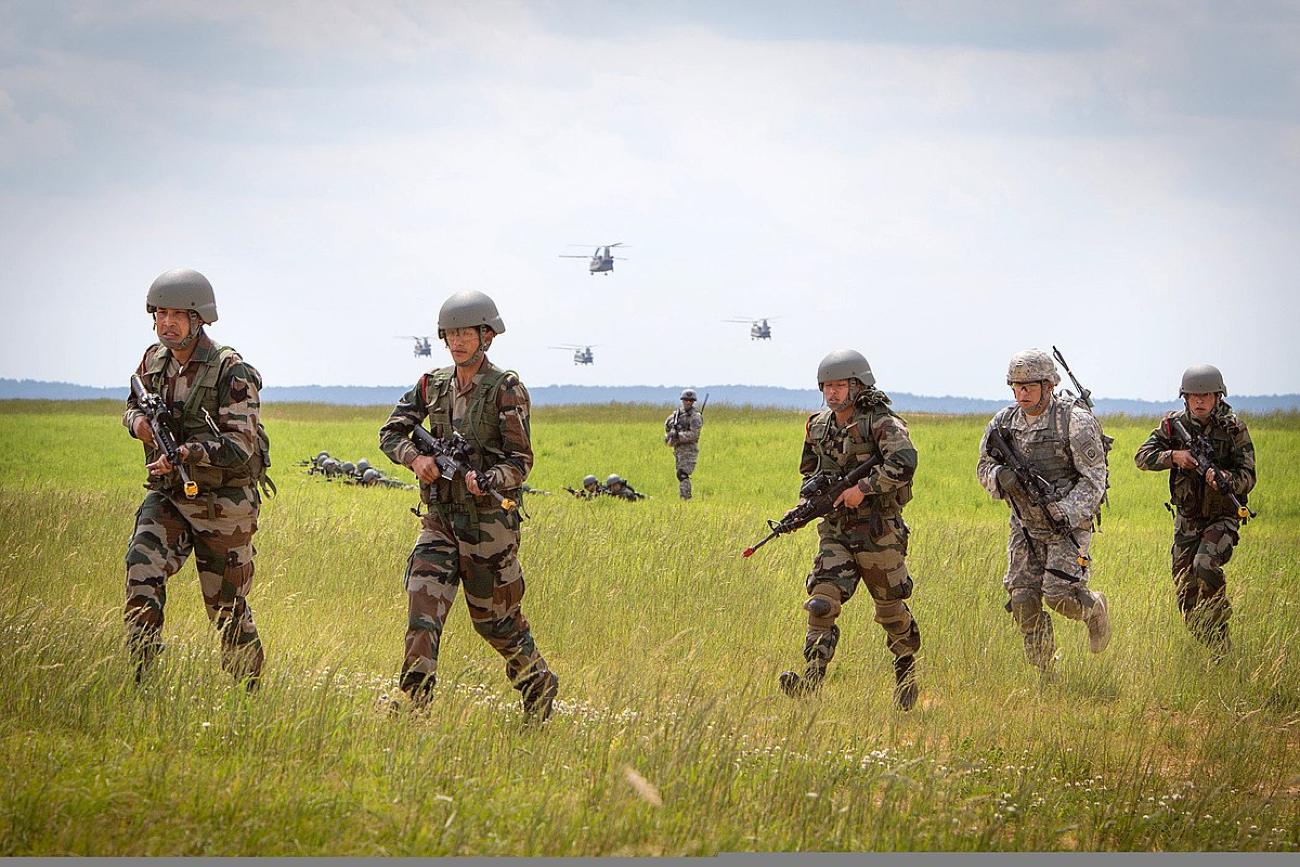Gurkhas are known for their fierceness. However, during their UN Peacekeeping posting to Sierra Leone, they encountered a turn of events that tested their tenacity and honor. It is the story of 233 Indian Army soldiers who were besieged for over three months without any replenishment or resupplies by rebels in Sierra Leone.
The Revolutionary United Front (RUF) demanded the surrender of all UN Peacekeepers in the Indian garrison at Kailahun, including a British and a Russian office. But the Gurkhas displayed “nerves of steel and an indomitable spirit” and refused to lay down their arms.
The operation to rescue these soldiers codenamed ‘Operation Khukri,’ has gone down in the annals of UN Peacekeeping history. General JJ Singh (retired), former Indian Army Chief, described it as when the Indian soldiers “chose death over cowardice, dignity over two meals and honor over freedom.” General JJ Singh was behind the planning of Operation Khukri as the Additional Director of General Military Operations in 2000.
The story begins as the Indian Army sets up a mission in Sierra Leone, one of the poorest countries in the world, embroiled in years of civil wars and military coups. The rebel group RUF has been fighting for nearly 9 years, and the residents of the country were at the receiving end of the atrocities. In 1999, the Lomé Peace Agreement was signed with the RUF and the rebels expressed willingness to lay down weapons to a neutral force of the United Nations. It was the task of the Indian Army to oversee the transition.
The aim of the Indian soldiers under the aegis of UN Peacekeeping was the ‘Disarmament, Demobilization, and Rehabilitation Programme (DDR) of the RUF rebels. ‘ The process entailed the reintegration of the rebels into society by giving them vocational training. It was also to set the stage for free and fair elections in the future.
However, the plan had two pitfalls: first, it didn’t specify a deadline for the RUF’s disarmament, and second, the disarmament process was termed ‘voluntary’ as per the agreement.
The Indian Army’s contingent was just settling in when the rebel leaders lured out the company commander, Major Rajpal Punia (retired), on the pretext of negotiating the surrender of arms. After separating him from his troops, the rebels laid siege to the garrison and asked the Indian soldiers to surrender their arms.
The rebels’ disdain for UN Peacekeepers had stemmed from the death of rebels protesting against the peace agreement. They were fired upon by the South Korean peacekeepers.
While Major Poonia was sequestered in a separate area, the rebels used another officer, Captain Sunil, as a human shield to coerce the Gurkhas into surrendering. Captain Sunil reportedly said: “Koi bhi hathiyaar nahi daalega chahe yeh mujhe goli hi kyun na maar de. Humare tirange ki izzat kam nahi honi chahiye kisi bhi haal mein (Even if they shoot me, nobody will surrender, nobody would diminish the honor of our tricolor).”
All other UN Peacekeepers deployed in the region had surrendered to the RUF, which even managed to capture a UN helicopter.
For 75 days, diplomatic channels continued to hold parleys to affect the release of the Indian soldiers. The dynamics of UN Peacekeeping restricted the soldiers from using force.
The preparation for a rescue operation was further complicated as the then UN Secretary-General, Kofi Annan, was from West Africa, and has been micro-managing the operation. The Nigerians, not happy with the Indian military operating in their zone of influence in Sierra Leone, were rejoicing at the predicament. The Americans and the British were sympathetic to the Indian cause but were hesitant to support military action to end the hostage crisis.
Operation Khukri
Major General VK Jaitley of the Indian Army was the field commander in Sierra Leone. Along with the 223 Indian soldiers were 11 military observers of various nationalities.

The time came to choose the military option as restlessness was growing back in India over the prolonged agony of the Indian soldiers.
After diplomacy failed, the Indian Army airlifted about 120 Indian Special Forces operators (called the Ghatak platoon) from New Delhi to execute the mission to rescue the peacekeepers. The team was put together in haste with the soldiers having no time to train as a team.
The British lend the Chinook helicopters to help the Gurkhas escape from the Kailahun garrison grounds. At 6.15 am on July 15, 2000, the area reverberated by a loud explosion as an explosive was detonated to breach the garrison compound walls. At the same time, the besieged Gorkha soldiers destroyed the arms of the RUF soldiers in the compound.
Through the breach came a convoy of Ashok Leyland trucks and Mahindra Jeeps, all stenciled with UN on the sides.
However, the escape was not to be easy. Last night’s rain had made the ground slushy, and the trucks were getting stuck. The soldiers had to get down and push the trucks as the rebels were in hot pursuit in their Toyota trucks and were gaining ground.
The plan was to evacuate the 11 military observers and a few ailing soldiers by the Chinook, but the remaining soldiers had to fight their way out in the garrison’s trucks and jeeps.
Two para commandos were injured when a shoulder-fired rocket hit a tree, spraying them with splinters. The Indian soldiers then triggered the booby traps and improvised explosive devices laid by them earlier that morning to slow the rebels.
For 45 minutes, the para commandos fought the rebels and tried to keep moving forward. They kept looking skyward for support from the IAF’s Mi-35 ‘Akbar’ attack helicopters. But inclement weather delayed the Mi-35 support; unlike Chinooks, it did not have all-weather flying capability.
The para commandos and Gurkhas were on the road for three hours, being fired and chased by the rebels when the weather improved and the Indian Air Force’s Mi-35 got airborne. The destination of the escaped soldiers was Geihun, a place 12 kilometers away where the Indian Army’s 18 Grenadiers were air-dropped.
When the IAF attack helicopter approached, the para commandos detonated a Phosphorous grenade that gave orange smoke. ‘Everything north of orange smoke is the enemy. Do with them as you deem fit,” the team leader radioed to the pilot.
The helicopters started strafing with rockets and guns and cleared two kilometers of road immediately. The pounding continued for the next two hours.

In the words of Major Poonia: “The helicopter with engineering stores reached our location in a jiffy. It was a spectacle to witness our soldiers in Olive Green, camouflaged against the wilderness, blazing at the RUF. Concurrently with the attack helicopter showering fire on the rebels, the Mi-17 hovering twenty meters above the ground began dropping wooden planks for the bridgework.” Major Poonia rose to the rank of Major General in the Indian Army and later wrote a book “Operation Khukri- the true story behind the Indian Army’s most successful mission as part of The United Nations.”
The soldiers created a makeshift bridge in a snap. The entire rescue operation from the death-dealing ambush took about an hour.
The soldiers reached Geihun and joined the 18 Grenadiers. From there, they had to reach Pendembu. The link-up was delayed as the rebels, backed by excellent radio communication, dug up the road between Geihun and Pendembu.
The 5/8 Gurkha soldiers captured Pendembu, and from here, they were to be heli-lifted. But the RUF put up strong opposition, delaying the capture of Pendembu. It was already 7 pm, and the soldiers were forced to stay there for the night. They came under heavy fire from the rebels. The Mi-35 helicopters had to carry out pre-emptive strikes to stop the rebels from regrouping.
It was only the next day the Gorkha soldiers were heavy lifted. The Indians managed the rescue with no casualties. Only seven Indians were injured, in contrast to 34 rebels killed and 150 wounded.
A large cache of weapons, including a surface-to-air missile, four rocket-propelled grenades, 12 AK-47s, six general-purpose machine guns, three heavy machine guns, and anti-personnel mines, were captured by the rebels.
Operation Khukri sent a strong message to the rebels. As a tribute to the bold operation executed by the Indian soldiers 10,000 kilometers away from home, the people of Sierra Leone built the Khukri War Memorial on the bank of the River Moa.
- Ritu Sharma has been a journalist for over a decade, writing on defense, foreign affairs, and nuclear technology.
- The author can be reached at ritu.sharma (at) mail.com
- Follow EurAsian Times on Google News




